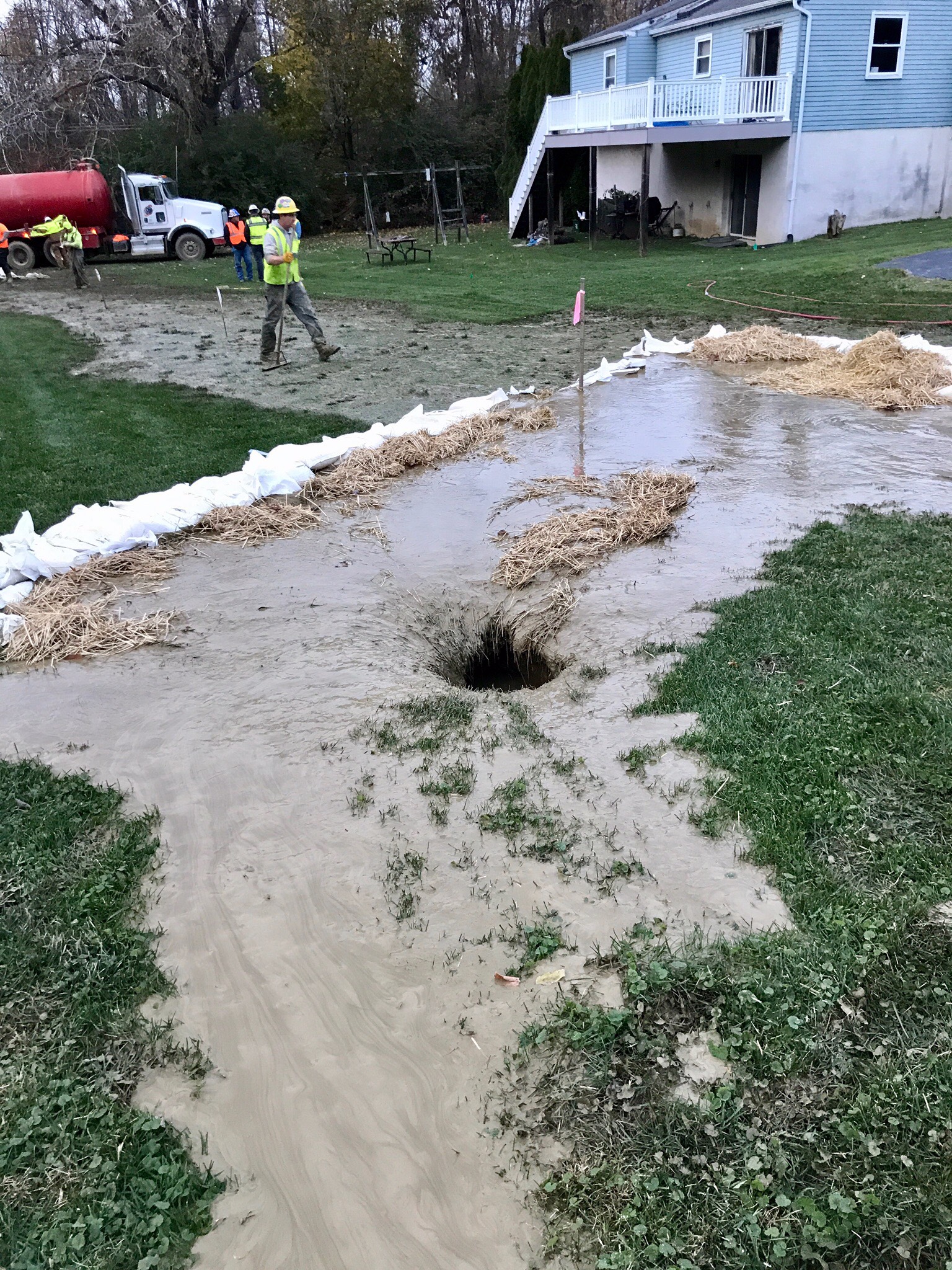In December 2013 Sunoco Logistics announced the start of an Open Season for their Mariner East 2 (ME 2) project. This pipeline would carry natural gas liquids (NGLs) from Marcellus Shale regions to their Marcus Hook facility and then transported to Europe for the manufacture of plastics. The project was to be operational in 2016 but now two years later it is still under construction and facing many hurdles impeding construction. Why did this happen?
First let’s see if this project would have any significant long term benefit for the citizens of our Commonwealth.Though the Public Utility Commission (PUC) determined that this pipeline was a public utility with the right to claim eminent domain, ninety percent of the transported product would be sent overseas and the remaining ten percent (propane) was only made available to certain locations in Pennsylvania as an afterthought to curtail public opinion, and not as an initial intent.
Next let’s look at the route. Sunoco chose to have ME 2 nearly always follow the right-of-way of Mariner East 1 which was constructed in 1931 to transport petroleum products from Marcus Hook to Western Pennsylvania. In 1931 the route through Chester and Delaware Counties was primarily farmland or sparsely populated and not densely populated suburban counties. This route would bring ME 2 close to schools, nursing homes, playgrounds, and houses of worship as well as thousands of homes. My own township (East Goshen) in Chester County had only 800 residents in 1931; now we have over 18,000.
The construction of ME 2 has been a major problem for Sunoco, which already had a poor safety record. Approval of their required permit applications for erosion and sediment control and wetlands and waterways required many revisions and were hastily approved by the DEP without a final public hearing. Experts have claimed that the applications were technically deficient, and this is a matter pending litigation.

Prior to construction the Department of Environmental Protection (DEP) warned Sunoco that the location of many private water wells was not included in their plans and that certain regions, including West Whiteland Township in Chester County, possessed Karst geology formed by dissolution of soluble rocks like limestone characterized by underground drainage systems with sinkholes and fissures. This geology would prove troublesome for horizontal directional drilling (HDD) that they planned for this area.
Construction commenced shortly after the environmental permits were issued (February 2017), and in June release of drilling mud from HDD contaminated several private wells in West Whiteland. Over 100 spills (inadvertent returns) damaging water supplies in at least five locations were documented, prompting a temporary halt in HDD by the Environmental Hearing Board (EHB), and a settlement was reached in August requiring Sunoco to improve their HDD techniques to the satisfaction of the DEP. After the resumption of construction the DEP in January suspended the permits issued to Sunoco because of numerous egregious permit violations including additional inadvertent returns, contamination of wells, an expanding sinkhole threatening homes, and unauthorized construction methods. The settlement reached with the EHB had not been respected.
In February the DEP issued a $12.6 million penalty to Sunoco and lifted the construction suspension after what they categorized as a “stringent compliance review,” which is being challenged in court. The following month the PUC issued an emergency order suspending operation of ME 1 (transporting NGLs) due to safety concerns regarding the integrity of this pipeline, which may have been compromised when HDD constructing ME 2 in West Whiteland produced four separate sinkholes exposing ME 1. Sunoco has now proposed to the DEP to switch to open trench construction through the remainder of West Whiteland, which includes a congested business district. This will lead to environmental damage to many residences as well as numerous transportation problems.
Though it is quite obvious why there have been so many construction delays we must not lose sight of the fact that ME 2 (and a companion ME 2X in the same right-of-way) will be transporting hazardous NGLs. If there is a leak the liquids revert to a gas, but unlike natural gas, which dissipates into the atmosphere, it hovers over the ground where any ignition source, e.g. starting a car, could result in a massive fire or explosion because it is very combustible. In addition it is odorless, making early detection difficult. Is there any wonder why so many residents along the path of ME 2 are so concerned about the welfare of their families and environment and are requesting a formal, impartial risk assessment of this project.
Bernard Greenberg stands as a Chairman on the Pipeline Committee and is an active volunteer with the Sierra Club Southeastern Group. This article is part of our Summer 2018 Sylvanian Newsletter. To read other articles from this issue, please click here.